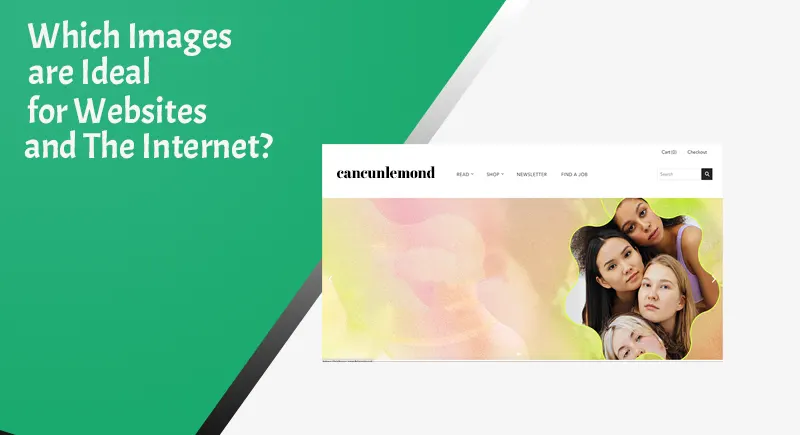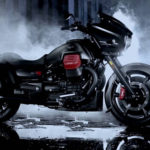In visual narrative, three primary picture categories are frequently employed: iconic, symbolic, and indexical. You may employ any kind of image to get the desired outcomes, frequently simultaneously on the same project. The “best” kind of image for web design does not exist. You must combine several image types to achieve the desired results.
Let’s start by examining what makes each sort of image distinct before discussing the ideal applications for each.
1. Classic images
According to The Visual Storyteller’s Guide to Web Design, iconic images are those that instantly evoke a sense of recognition and are strongly associated with a certain concept. Additionally, they are typically shown with extremely precise imagery, making the entire concept understandable even to those who are not familiar with them. It seems as though they are expressing exactly what they want to.
Examine the signage indicating the locations of the restrooms for men and women. Even if you haven’t seen or been informed what these clothes are, it’s easy to identify the individual wearing trousers or a dress in any of these pictures.
Many famous images, such as wheelchairs, signs, and other symbols, depict simplified images of actual objects. We refer to these images as icons. Icons may frequently be found in sets, such as the free UXPin icon collection. This is because icons, whether or not they have text descriptions next to them, must be understandable and clear.
Scientific data are displayed in memorable illustrations using the format of graphs, charts, and diagrams. It is difficult to confuse them for someone else because of how lucid and simple their information is.
2. Images that convey a message
Symbolic pictures are often more generic than iconic images, typically depicting a concept or feeling rather than a specific object. Iconic pictures have a more tangible appearance. Logos frequently employ symbolic imagery to assist companies in communicating the emotions they want their target consumers to experience.
The Microsoft Windows symbol, for instance, resembles a window in a way that is both physical and figurative. Some may have a different perspective, particularly if they are from a society where a different style of window is more common.
The majority of the time, you must be instructed on the meaning of each sign. They are difficult to identify at first since they are not genuine. They might not make much sense until the message is fully received.
Semiotics, another name for “visual grammar,” on the other hand, enables symbolic pictures to convey meaning more effectively than iconic ones. Symbolic images are similar to visual metaphors, and to fully comprehend what they signify, it’s sometimes necessary to grasp metaphors in general.
Because symbols are used so frequently to stand for certain concepts or objects, many of them are well-known in culture.
The location of stop signs and other traffic signs is one instance. Furthermore, a local of another nation would most likely give you incorrect information if you asked them to interpret the meaning of several traffic signs.
3. Indexical photographs
Images that serve as guides establish a connection between an image’s meaning and appearance. For instance, if the thermometer reads less than zero, it indicates that the temperature is below freezing.
Ads and design frequently employ indexical pictures. We try not to describe things too literally because we would rather to evoke a feeling in the other person than to cram facts down their throat. We make an effort to avoid providing too much detail because of this.
Consider the following two instances:
A genuine person sobbing, or a depressing photo of a child’s muddy, abandoned bike in the front garden?
If you had to choose only one photo of a lovely puppy playing in the beach, which one—the emotional or the physical—would you pick?
Although people may feel anything when they see either of the two types of photos, when they see the second example of each type of picture, they are more likely to feel something rather than merely think about it. This is true even if you can feel anything when you look at either kind of image.
Colour selections and other more abstract visual components can provide a similar impact. The initial impression of a colour scheme from the late 1980s or early 1990s that incorporates bright colours will be significantly different from the rosy pinks and subdued aquas that were fashionable in the 1950s.
Which method works the best?
Every one of the three images must be included in the layout. Like any other design process, this one is entirely dependent on the particulars of your project. Nobody disputes the existence of certain reasonable ground rules, though.
You will likely want to stay with famous photographs or images that fall in between iconic and symbolic while creating the website’s basic navigation layout. You don’t want website visitors to ponder about what may occur when they click on a certain image.
Use the concepts and images that immediately spring to mind to try some free association. Additionally, choose images that highlight those words, and then begin to consider what would go well together and what you should omit. You can seek help of professional web design services to better your website’s design too if necessary.












